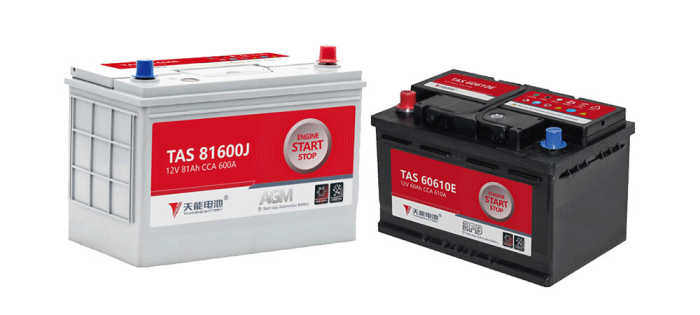How To Maintain Garden Lead Acid Battery
Martin Kinyua is a digital learning consultant who has a passion for helping others get the best out of their technology.

This article will offer nine tips for proper lead-acid battery maintenance.
The battery is the foundation of the inverter, and a quality battery will keep the inverter running.
Fortunately, the invention of deep-cycle batteries has helped as a backup power option. This ensures that all your appliances are working.
For power to flow constantly in your homestead, however, you really need to apply proper maintenance strategies to your battery. This article will break down what you need to know and do.
1. Don't Place the Battery Directly on the Floor
Whenever a charged body is placed on the ground, charges flow from the body to the earth (earthing). The flow of charges results in power loss. A similar case happens to your battery when you place it on the ground.
Placing it on the ground may lead to discharging. Since charges can't flow through a non-conductor of electricity, instead place it on a non-conductor material like a piece of wood.
2. Always Ensure the Terminals Are Clean
When the battery is working, a white substance accumulates on the terminals. The white substance is lead sulphate. It corrodes the terminals and increases the resistance against power flow. High resistance makes the flow of power to and from the battery very difficult.
When cleaning the corrosion, simply soak a toothbrush in a mixture of hot water and baking powder and scrub the terminals.
3. Keep the Battery in a Ventilated Place
When a lead battery is working, it produces hydrogen gas. Keeping it in a ventilated place ensures hydrogen gas does not build up in the cells.
The gas is very explosive such that even a small spark can ignite it. Its explosion can lead to severe damage to your body, vehicle, or any other property near the battery.
Note: If the battery explodes, it becomes absolutely nonfunctional.

Deep cycle lead-acid battery in use
4. Keep the Battery in a Moisture-Free Place
Presence moisture increases the rate of corrosion on terminals. The corrosion increases the resistance against power flow.
Read More From Dengarden
As a result, power flow to and flow from the battery becomes difficult. So be sure to keep your battery in a moisture-free environment.
5. Keep the Battery in a Dust-Free Place
Dust is a poor conductor of electricity. When it accumulates on the terminals, it leads to an increase in resistance against power flow.
Dust has the potential of reaching places we can't even imagine, however. You should therefore not assume its absence. Wiping the terminals regularly will prevent dust accumulation.
6. Avoid Shorting the Terminals
Short-circuiting is the action of joining the positive and negative terminals of the battery. One of the indications of shorting is the generation of sparks in the connection.
Shorting is associated with the following negative effects:
- It leads to discharging: High power is produced once the terminals come in contact. Since this power has no path of flow, it builds up and causes a heating effect. As a result, the power is lost. Similarly, the sparks produced also lead to power loss.
- It damages the cells: As we have just seen, shorting produces a huge amount of heat. High amounts of heat increase the rate of corrosion, which shortens the battery's life. As well, the plastic casing may also melt.
- It may make the battery explode: An explosion damages the battery completely.
- It damages the fuse: Once the terminals are contacted, a high amount of power flows through the connection instantly. Since a fuse is designed to safeguard against high power flow, it may blow.
7. Check the Level of the Dilute Acid
Without the acid, the battery cannot work. Since the acid is a medium of charges flowing from one cell to the other, always ensure the level is between the minimum and maximum. Form a habit of checking the level in a month's time.
8. Use Distilled Water When Refilling
When refilling, always remember to use distilled water—since the decrease in the level is due to evaporation of water components and not those of the acid.
Tap or rainwater should not be used to refill. The water has impurities that increase resistance against the flow of power.
9. Use the Battery Regularly
Using it on a regular basis prevents the formation of lead sulphate coating. As we have seen, lead sulphate increases resistance against power flow.
Even if there is no power breakage from the mains, ensure you discharge and recharge it in one or two months' time.

Maintenance Is Always Cheaper Than Replacement
It is such a privilege to have amazing devices capable of working in the absence of mains power. With a functional charging system and a battery inverter, you can get a full-time power supply. All you need is to observe the tips shared in this article.
I hope this will keep power running in your home whenever need be. Remember, the cost of maintaining is always lower than replacing a device.
This content is accurate and true to the best of the author's knowledge and is not meant to substitute for formal and individualized advice from a qualified professional.
How To Maintain Garden Lead Acid Battery
Source: https://dengarden.com/safety/Maintenance-Tips-of-Lead-Acid-Inverter-Battery
Posted by: rodgerspromptiff.blogspot.com

0 Response to "How To Maintain Garden Lead Acid Battery"
Post a Comment